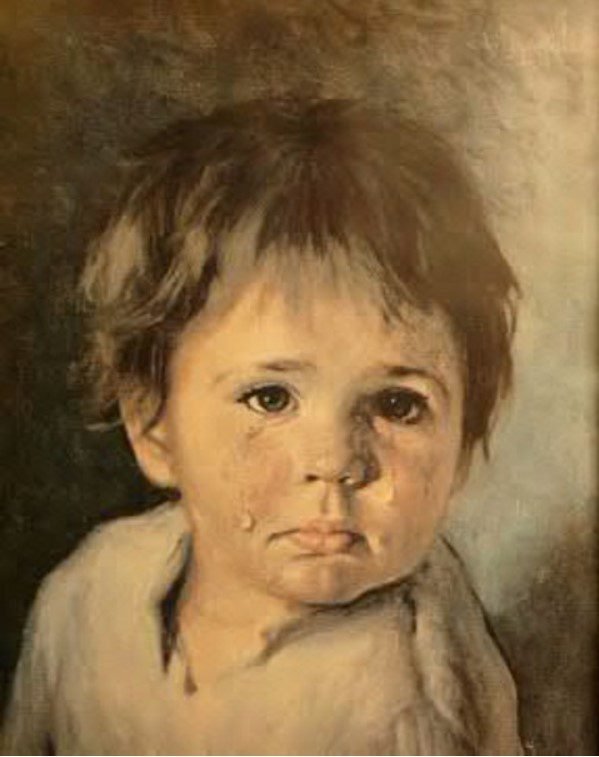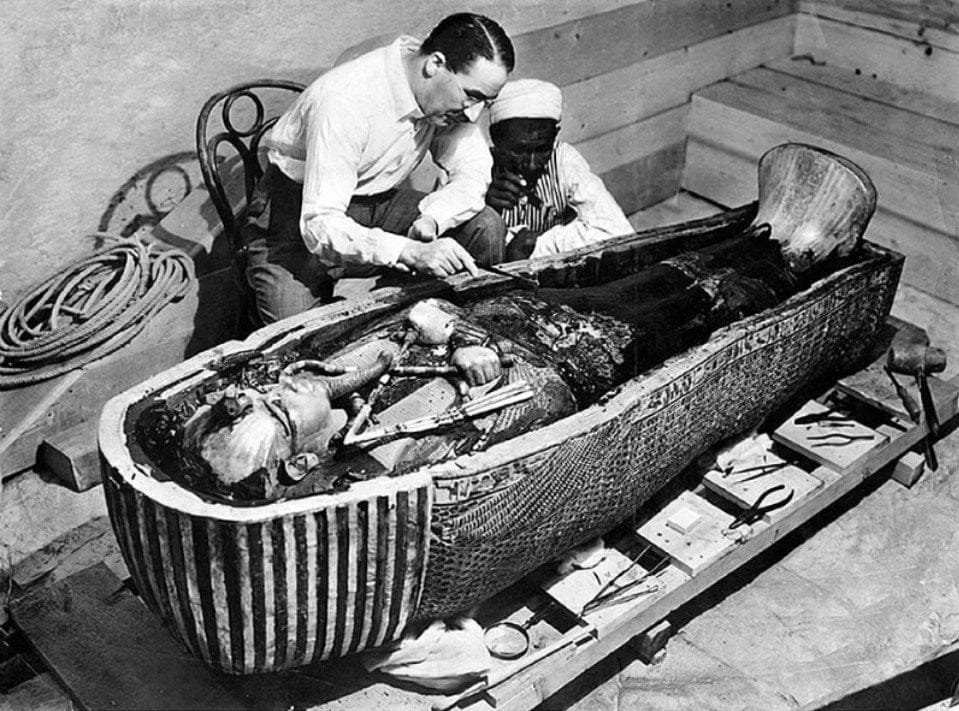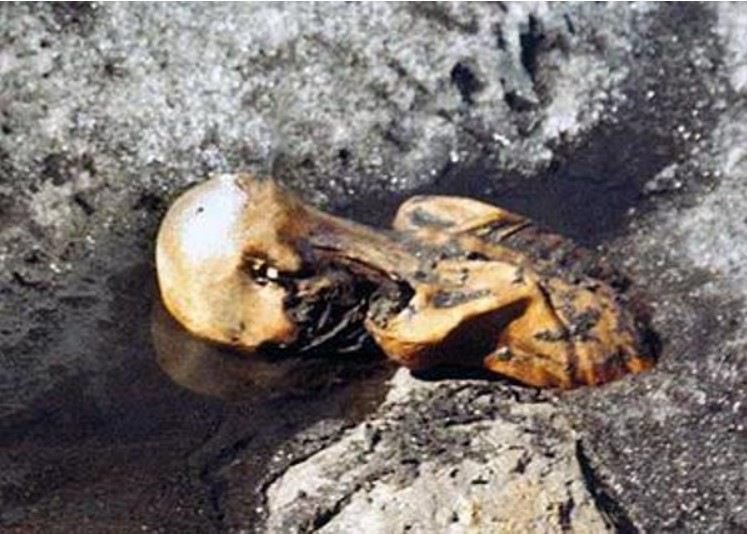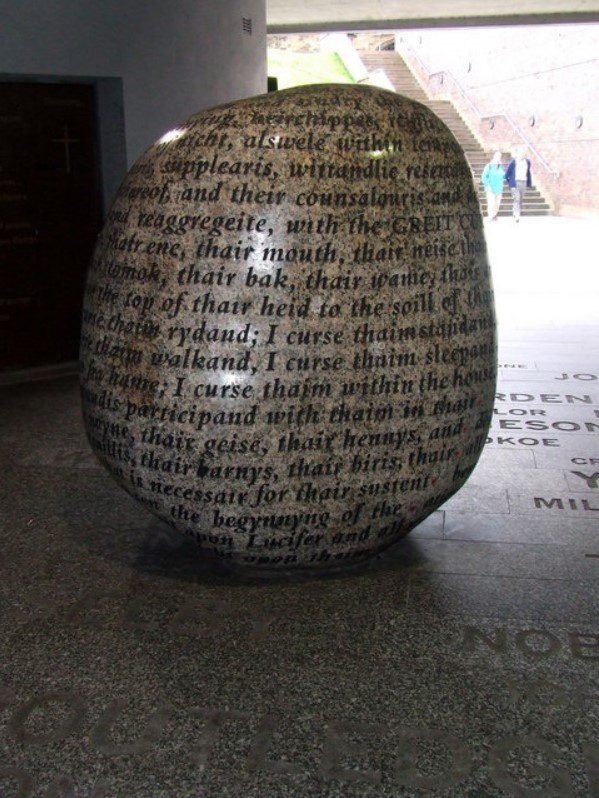6. The Curse of the Weeping Boy

Curse-of -he-Weeping-Boy
In the 1950s, the Italian artist Bruno Amadio painted a series of portraits depicting the faces of a crying boy (‘Crying Boy’). The artworks sold well, but they became known mainly because they could endure a house fire undamaged. Several houses in which copies of the ‘Crying Boy’ hung went up in flames, but the portraits were spared for a mysterious reason. Once again rumors arose that there was a curse on the artworks that set the owners’ homes on fire. Further investigation revealed that the varnish layer on the portraits had a fire-retardant effect so that the paintings resisted a fire almost unaffected.
7. Tutankhamun and his famous curse

Tutankhamun-and-its-famous-curse
One of the most famous curses is undoubtedly the curse of Tutankhamun. Archaeologist Howard Carter uncovered the untouched tomb of this Egyptian pharaoh from the 18th Dynasty in 1922. It was one of the most spectacular archaeological finds of the 20th century. At the entrance to the burial chamber was the threatening text ‘He who disturbs the pharaoh’s sleep will be touched by the wings of death’. Carter and his helpers paid little attention to it. According to some, this would make them sick later on, because in the years that followed no less than 17 people died involved in the discovery of the tomb. Especially the sudden death of the lender of the expedition, the English Lord Carnarvon, raised eyebrows. Messages about the ‘curse of the Pharaoh’ went around the world. Howard Carter himself apparently did not suffer from the curse: he died a natural death at the age of 64.
8. The curse of warlord Timur

The-curse-of-warlord-Timur
Timur was a tyrannical warlord from present-day Uzbekistan. He conquered large areas of land and built up a vast empire in the course of the 14th century. Timur died in 1405. Like Tutankhamun, he did not want to be disturbed during his eternal rest. On his tomb the terrifying text ‘He who disturbs my tomb awakens an even more terrible conqueror than me’.
However, this did not prevent the Persian ruler Nadir Shah Afshar from taking Timur’s jade sarcophagus from the mausoleum Gur-e Emir in 1740. Nadir was murdered a few years later. The Russian archaeologist Mikhail Gerasimov also didn’t bother with the curse when he exposed the remains of Timur and removed his skull on 21 June 1941. A day later, on 22 June 1941, the German army invaded the Soviet Union. Did Timur mean by the warning ‘an even more terrible conqueror than me’ Adolf Hitler?
9. Cursed by Ötzi the Iceman

Cursed-by-Ötzi-the-Iceman
In 1991 the Simon and Simon couple found the mummified remains of a prehistoric hunter in the Ötztal Alps by chance. The mummy, nicknamed Ötzi the Ijsman, turned out to be more than 5,000 years old. The find immediately aroused the interest of scientists all over the world. Archaeologists took the mummy to various laboratories and shoved the remains under various microscopes and scanners.
Apparently Ötzi didn’t like that, because soon after the discovery several members of the research team died. Among them was Dr. Rainer Henn, who led the forensic investigation. He was killed in a car accident in 1992. The mountaineer who led Rainer Henn to the mummy in Ötztal, Kurt Fritz, died in the same year in an avalanche. One of the discoverers of the mummy, Helmut Simon, crashed into a ravine in 2004. A total of about 8 people died as a result of the discovery of Ötzi the IJsman. That was more than enough to send the story of a curse into the world.
10. The curse of Carlisle: a recent curse in our modern world

the-curse-of-carlisle
Even more recent than the curse of Ötzi is the curse of the English city of Carlisle. Carlisle is not so far from the border with Scotland. In the 16th century, many looters from Carlisle crossed the Scottish border to steal cattle. The bishop of Glasgow in Scotland put a curse on these looters in 1525. When the city of Carlisle wanted to celebrate the new millennium in an appropriate way in the year 2000, the city council decided to have a granite work of art made with the words of the curse on it.
The city council shouldn’t have had this work of art, the so-called ‘Cursing Stone’, made. Not long after the unveiling of the Cursing Stone, Carlisle was struck by all kinds of disasters: floods, fires, an outbreak of foot-and-mouth disease, and other setbacks. For ‘believers’ it was clear: the curse on the Cursing Stone caused all these misadventures. In 2005 a petition was held to have the stone removed, which (fortunately) did not happen. Even in our modern times, there are apparently people who necessarily want to believe in a curse.
